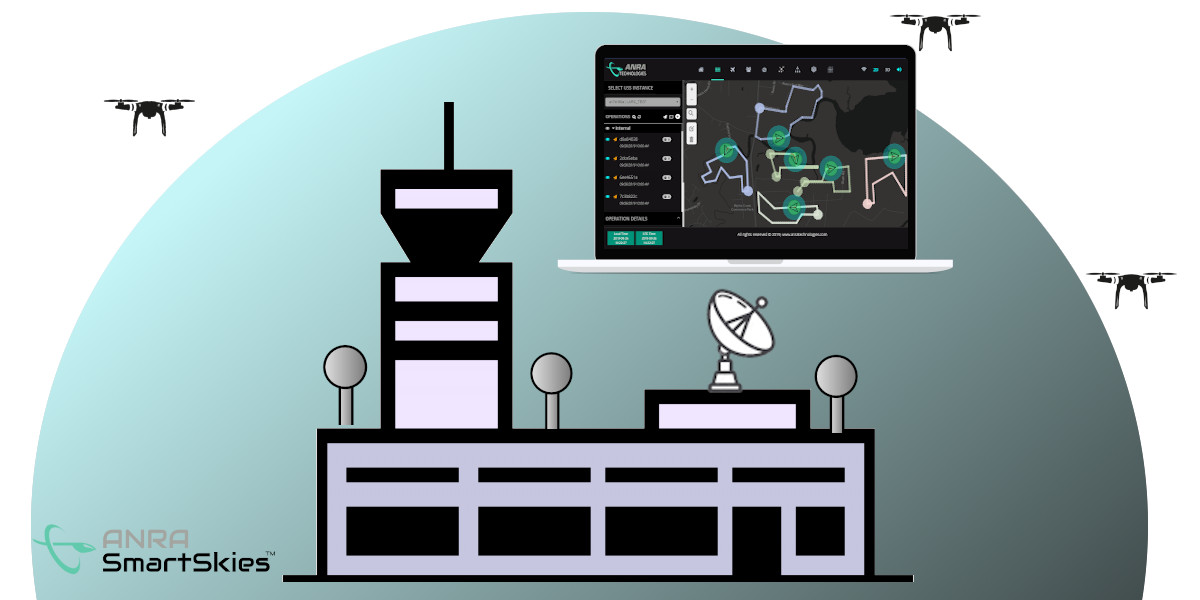UTM + CUAS = Pizza
The UAS industry faces a situation similar to what manned aviation faced about 80 years ago. As air traffic density increased, it became impossible for pilots to safely operate aircraft by themselves, and air traffic services became necessary for the sector’s growth. Traffic management was able to grow air traffic by creating a well-defined and known airspace environment in which aircraft could be safely operated. The lack of UAS traffic management, and critically, the ability to create this ‘well-defined and known’ airspace represents a barrier to the industry’s growth.
I’m not suggesting we go back to traditional traffic management solutions; however, technical capabilities exist that can help us address these problems very efficiently today. ANRA Technologies is taking advantage of modern technologies in computing, automation, and connectivity to ready a traffic management ecosystem which can respond to the predictions of the market – a market that, according to one assessment, is predicted to have 76,000 drones providing commercial services by 2030 (PwC – Skies without limit, 2018).
As drones are likely to operate closer to people and ground infrastructure, we need to develop more accurate situational awareness and a well-defined and known airspace to help with risk reduction and safety decision making. There have been numerous reported incidents of small drones flying near critical infrastructures such as ports and power plants, causing disruptions to aircraft operations, including shutting down airports.
Given these documented issues, the safety basics remain the same for drones. Aircraft must maintain separation, conform to airspace rules, and take precautionary steps to avoid collisions. ANRA’s products are developed with well-established principles and best practices to enable operators to safely manage their drone operations. A critical element is using a range of data feeds to create a well-defined airspace picture for use by the end-user.
Drones pose a different risk to aircraft than birds, which are also known to disrupt operations and cause accidents. Aircraft are designed for small bird strikes but not drones. Therefore, any intentional or accidental excursions into prohibited airspaces can lead to significant disruption or collisions leading to injury or property damage. The solution is to introduce effective surveillance to detect and track cooperative and non-cooperative aircraft, obtain reliable positions, and clear identification.
Effective surveillance of drone operations presents several technical challenges; however, this has not slowed the growth in the emerging market in C-UAS solutions to mitigate concerns and potential threats posed by drones. These systems are marketed as a one-stop solution to protect civilian and military environments, such as airports, stadiums, prisons, ports, power-plants, and other infrastructure.
By taking a modular and layered approach, we combine surveillance techniques, digital technologies, and operating rules to create a reliable, robust, and resilient C-UAS solution.
Today’s capabilities are aligned with well-established principles of Unmanned Traffic Management (UTM), including registration, remote identification, geo-awareness, and mapping to create accurate situational awareness. We can use various data feeds from independent surveillance such as radar, electro-optic, and radio-frequencies to develop a well-defined and known airspace environment to detect and track vehicles and provide coverage around the infrastructure of interest.
An example of this application is ANRA’s UTM platform that integrates the FAA’s Low Altitude Authorization and Notification Capability (LAANC), which provides airports with improved situational awareness of authorized drones operations in their control zones. This is further enhanced when C-UAS technology providers augment surveillance with technologies such as acoustics and RF detection. ANRA can ingest these additional surveillance technologies for a more complete airspace picture. Drones spotted in the airport control zone and not within the UTM system, or LAANC, are one step closer to being mitigated. A whole pizza pie instead of a single slice, with extra toppings.
A call to action for the industry is to think about developing and validating C-UAS technologies and collaborating with airspace services providers such as ANRA to develop effective solutions such that drone operations can be conducted safely.







